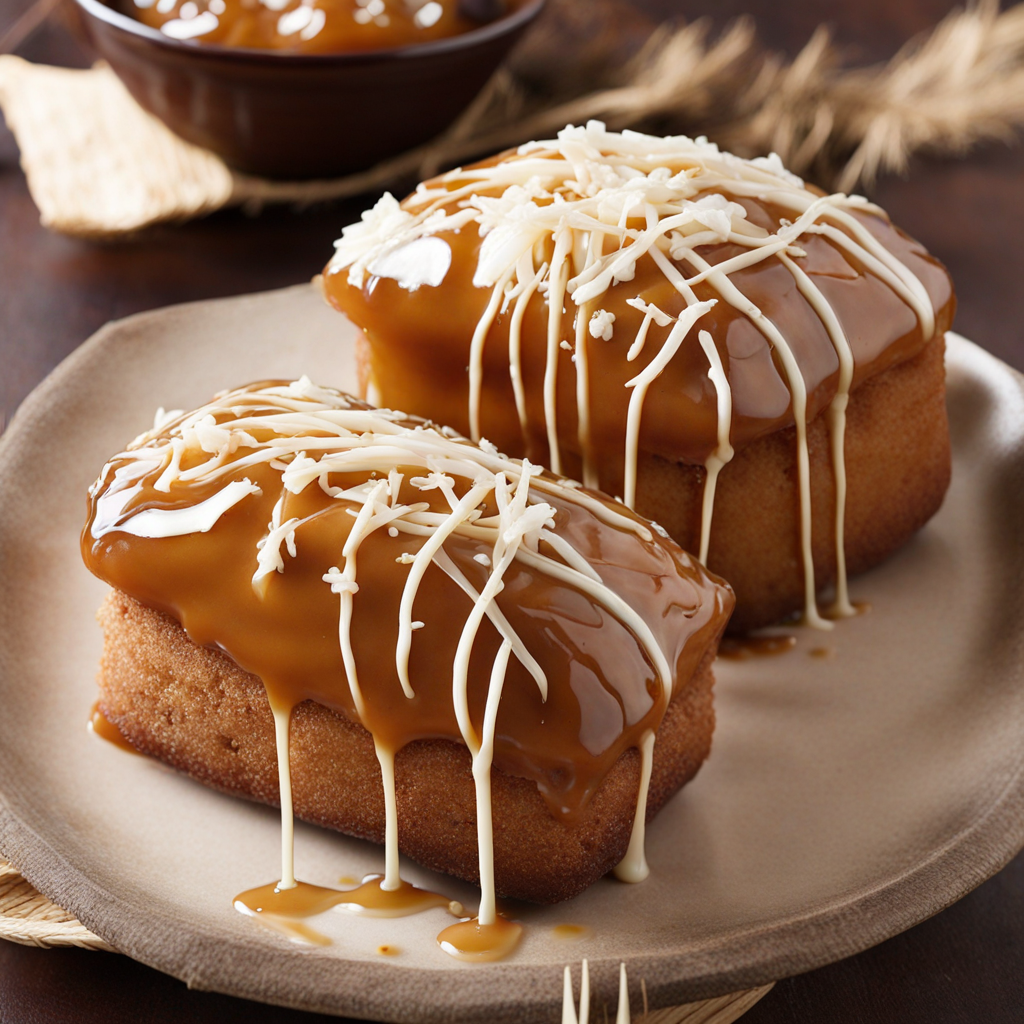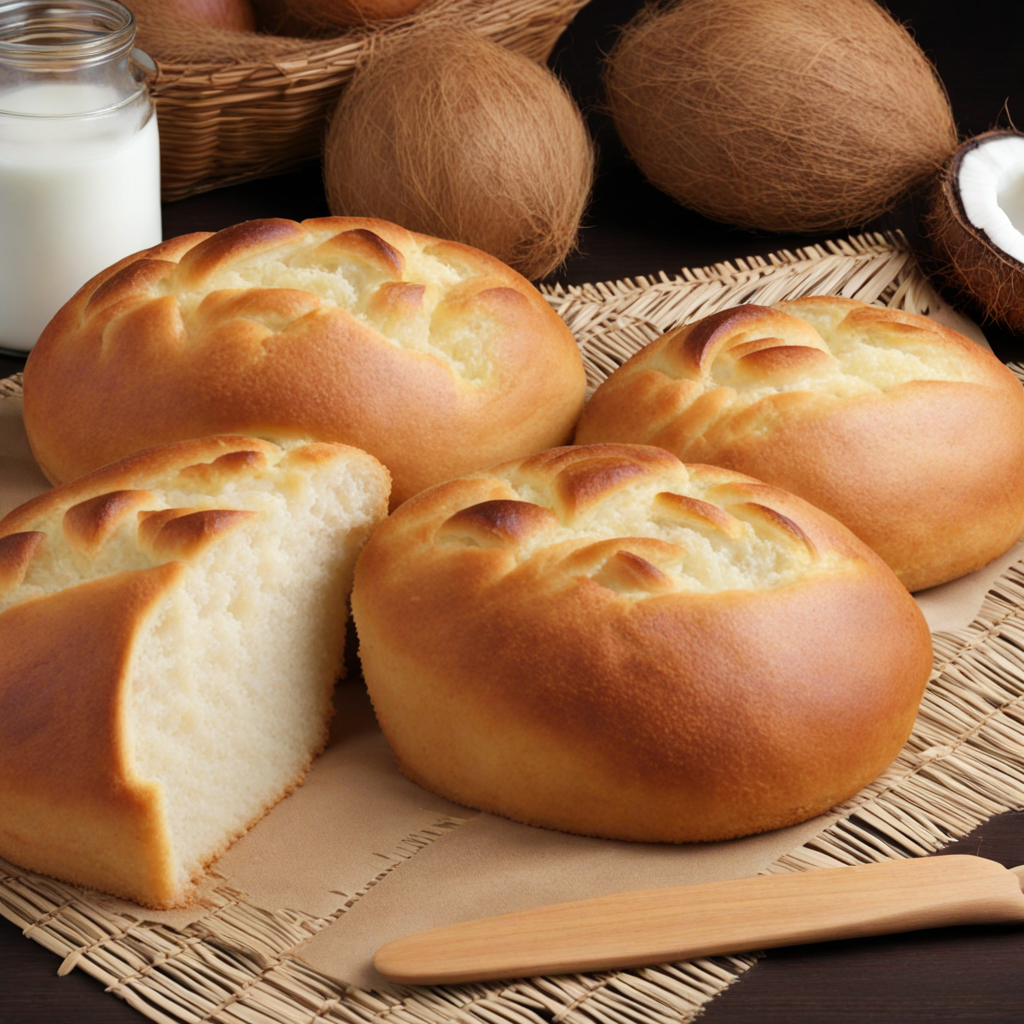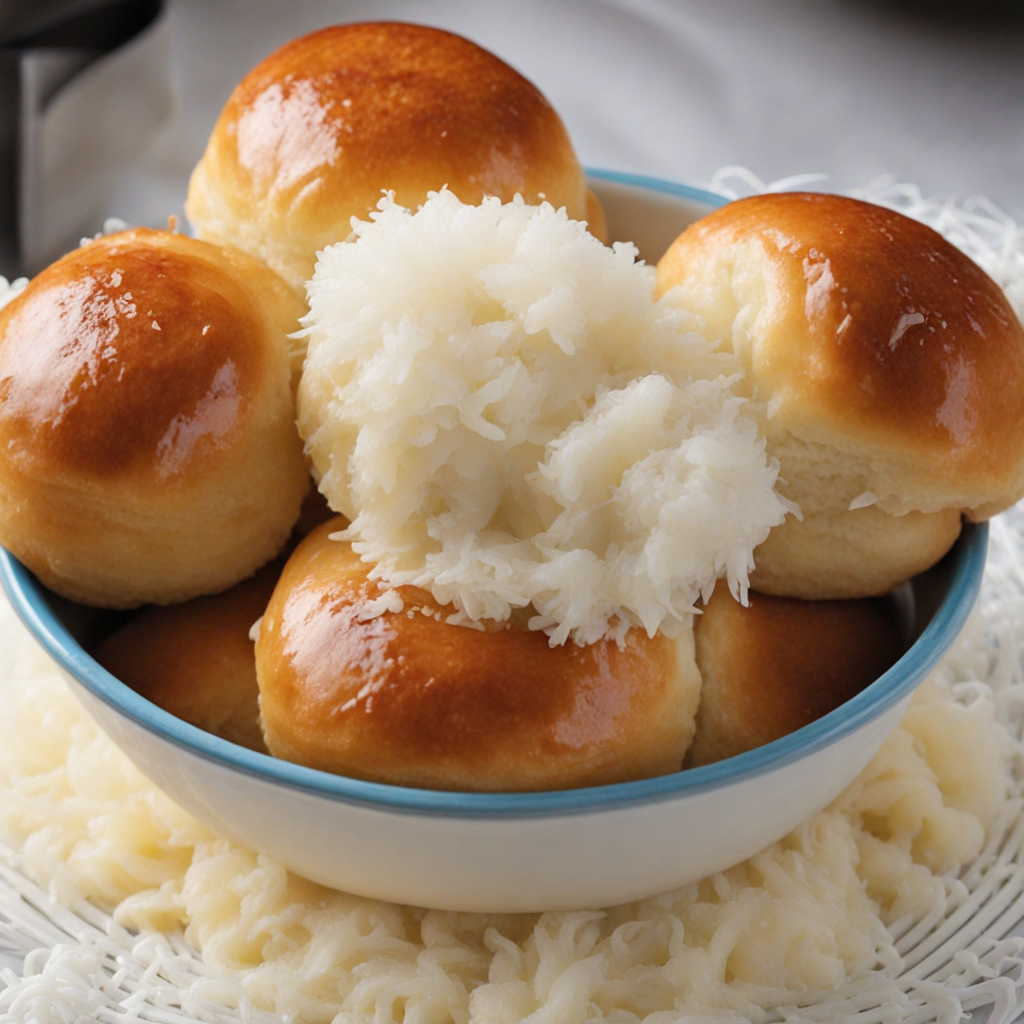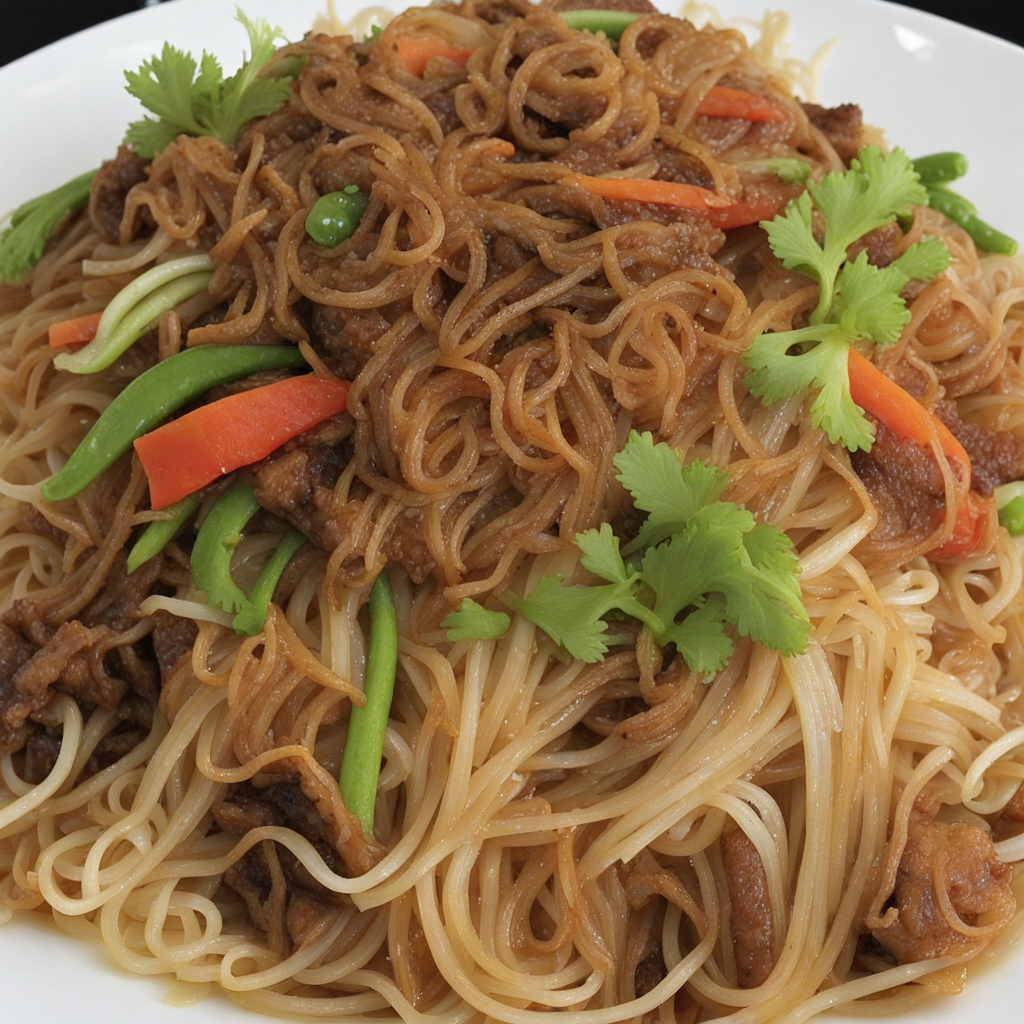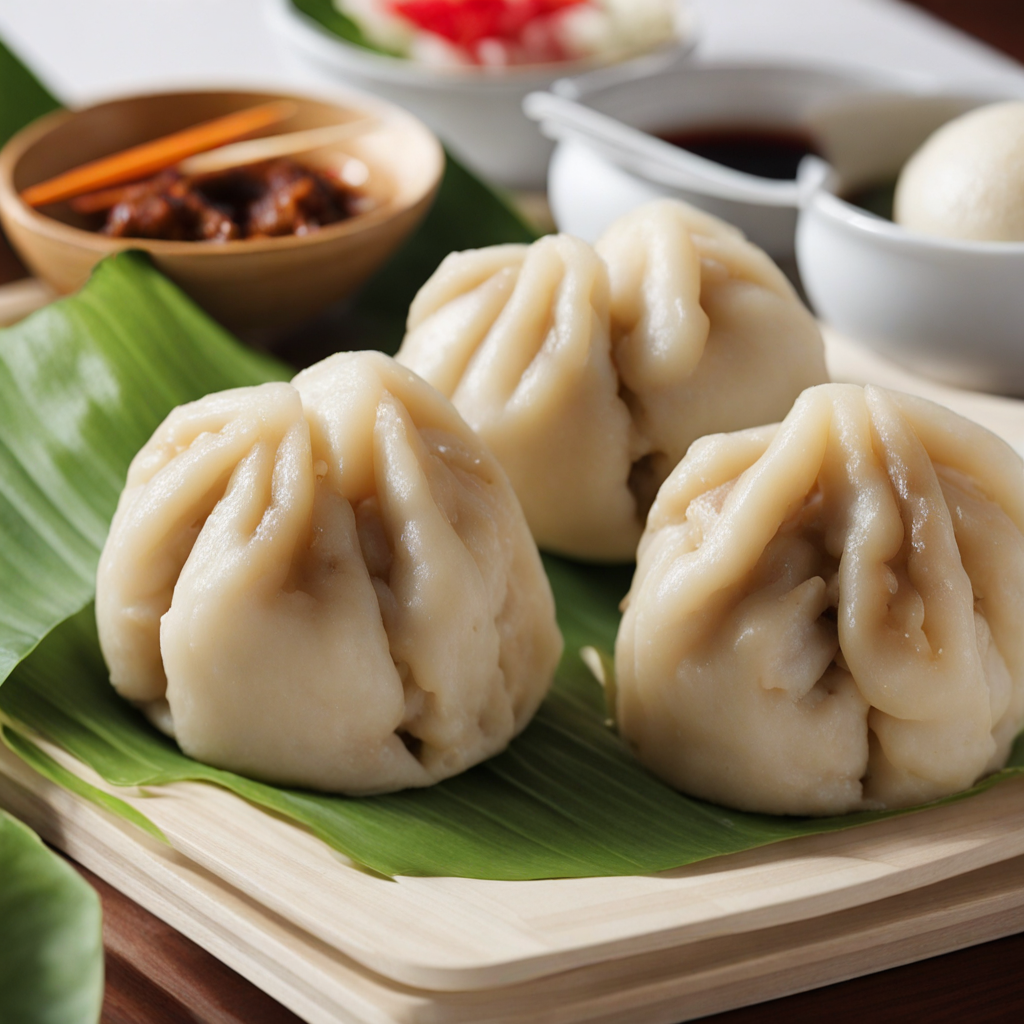Fa'ausi
Fa'ausi is a traditional Samoan dish that beautifully showcases the rich flavors and culinary heritage of the islands. At its core, Fa'ausi consists of ripe bananas that are steamed or boiled until they become tender and creamy. The bananas are then generously coated in a luscious sauce made from coconut cream and brown sugar, creating a delightful contrast of sweetness and richness. This dish is often served warm, making it a comforting treat that is both satisfying and indulgent. The combination of ingredients in Fa'ausi highlights the natural sweetness of the bananas, while the coconut cream adds a velvety texture and a tropical aroma that is characteristic of Samoa’s cuisine. The brown sugar caramelizes slightly during cooking, infusing the dish with a warm, toasty flavor that complements the fruity base. This dish is not only a testament to the island’s agricultural bounty but also reflects the Samoan tradition of using locally sourced ingredients to create simple yet extraordinary flavors. Often enjoyed as a dessert or a snack, Fa'ausi is a beloved part of Samoan celebrations and gatherings, bringing people together over its comforting taste. The dish is typically served on its own but can also be paired with a sprinkle of grated coconut or a scoop of ice cream for a modern twist. Exploring Fa'ausi is like taking a culinary journey through Samoa, where each bite offers a taste of the island's vibrant culture and a celebration of its tropical bounty.
How It Became This Dish
The Story of Fa'ausi: A Sweet Samoan Delight #### Origins Fa'ausi, a traditional Samoan dish, is a delightful blend of flavors that embodies the rich culinary heritage of the islands. The name "fa'ausi" translates to "cooked with sugar," which aptly describes the dish's main feature: sweetened taro or ripe bananas often served with a luscious coconut cream sauce. Its ingredients are simple, yet the preparation and enjoyment of fa'ausi reflect the deep cultural significance of food in Samoan society. The origins of fa'ausi can be traced back to ancient Polynesian traditions. The early settlers of Samoa, who arrived from Southeast Asia over 3,000 years ago, brought with them a wealth of agricultural knowledge and culinary practices. Taro, a staple crop in Samoa, was one of the first plants cultivated, and it quickly became integral to the Samoan diet. The use of coconut, another fundamental ingredient, further enriches the dish, as coconuts have long been valued for their versatility and nutritional benefits. #### Cultural Significance Food in Samoa is not merely sustenance; it plays a pivotal role in family gatherings, communal celebrations, and religious ceremonies. Fa'ausi is often prepared during special occasions such as weddings, birthdays, and cultural festivals, highlighting its importance in Samoan hospitality. The act of sharing food is deeply ingrained in Samoan culture, symbolizing unity, love, and respect among family and friends. In traditional Samoan society, the preparation of food is often a communal effort, with family members coming together to create dishes like fa'ausi. This gathering not only strengthens familial bonds but also serves as a means of passing down culinary skills and cultural knowledge from one generation to the next. The preparation of fa'ausi, like that of many traditional dishes, often involves storytelling and sharing of ancestral wisdom, making the act of cooking a cultural ritual in its own right. #### Development Over Time As the years have gone by, fa'ausi has evolved while maintaining its core identity. The introduction of Western ingredients and cooking techniques in the 19th and 20th centuries altered the landscape of Samoan cuisine. However, the traditional preparation methods for fa'ausi have largely remained intact. While the basic components of the dish—taro or bananas, coconut cream, and sugar—have not changed, variations have emerged based on regional preferences and ingredient availability. In contemporary Samoa, fa'ausi can be found in both homes and restaurants, often presented in a more refined manner to cater to tourists and the growing culinary scene. Chefs may experiment with additional flavors, such as vanilla or spices, to enhance the traditional recipe. This modern adaptation reflects a broader trend in Samoan cuisine, where chefs are blending traditional methods with innovative techniques to create new dining experiences. Moreover, fa'ausi's place on the global culinary stage has gained prominence as Samoan cuisine receives increased recognition. The dish is often featured in cultural festivals and food fairs, where it serves as an ambassador of Samoan culture. As international interest in Pacific Islander cuisine grows, fa'ausi has become a symbol of the islands' rich culinary narrative, representing a fusion of tradition and modernity. #### The Preparation of Fa'ausi The preparation of fa'ausi is a labor of love that requires attention to detail and a respect for the ingredients. The dish typically begins with the selection of taro or ripe bananas. Taro, when boiled, has a creamy texture that pairs beautifully with the sweet coconut cream. The bananas should be ripe enough to provide sweetness but not overly soft, ensuring they hold their shape during cooking. To make fa'ausi, the chosen starch is first cooked until tender. For taro, this involves peeling and boiling until it is fork-tender. For bananas, they are generally sliced and briefly boiled. Once cooked, the taro or bananas are then coated with a mixture of sugar and coconut cream. This mixture is often simmered to create a rich, thick sauce that envelops the starchy base, resulting in a delightful contrast of flavors and textures. Fa'ausi can be served warm or at room temperature, allowing it to be enjoyed in various settings. In traditional Samoan culture, it is often served on a communal plate, encouraging sharing and conversation among diners. The dish's sweetness makes it an ideal dessert, but it can also be enjoyed as a snack or even as part of a main meal. #### Conclusion Fa'ausi is more than just a dish—it is a testament to the resilience and creativity of Samoan culture. Its history is deeply intertwined with the islands' agricultural practices and social customs, reflecting the values of community, family, and tradition. As the world continues to embrace global cuisines, fa'ausi remains a cherished symbol of Samoa, connecting the past with the present and inviting people from all walks of life to experience the unique flavors of this beautiful island nation. In the ever-evolving landscape of culinary arts, fa'ausi stands as a reminder of the importance of preserving cultural heritage while allowing for innovation. As it finds its place on international plates, the essence of fa'ausi—its humble beginnings, cultural significance, and timeless appeal—will continue to resonate, bringing the spirit of Samoa to the forefront of the culinary world.
You may like
Discover local flavors from Samoa


